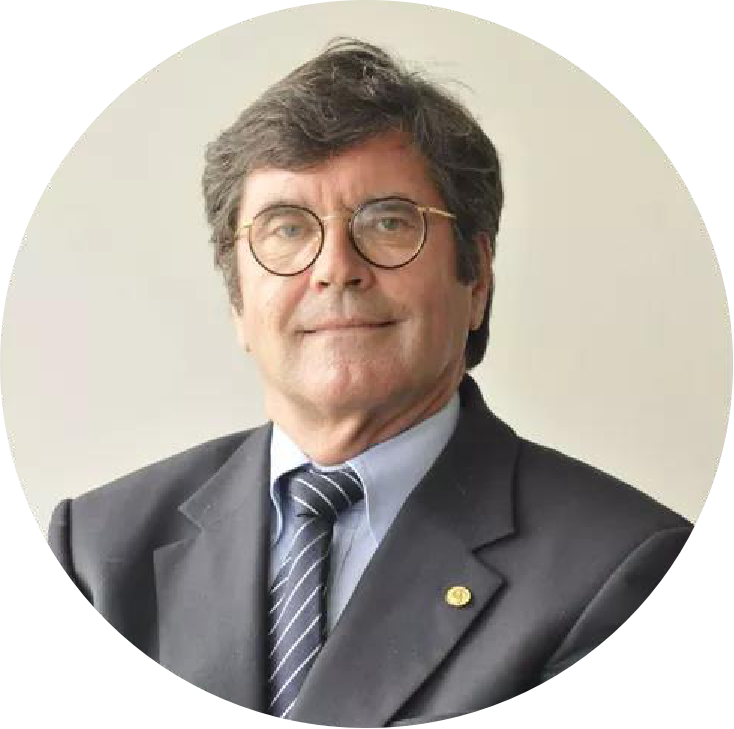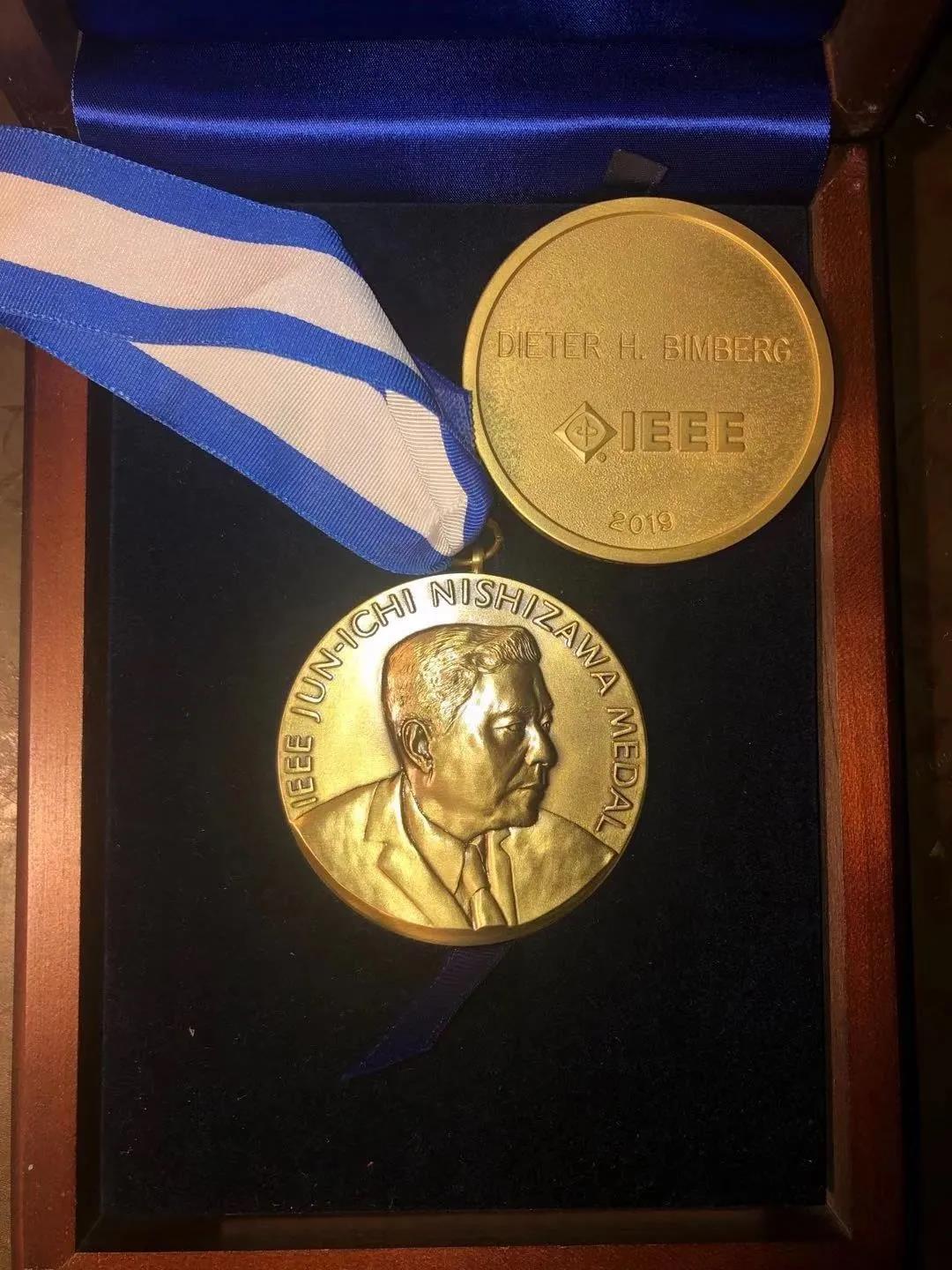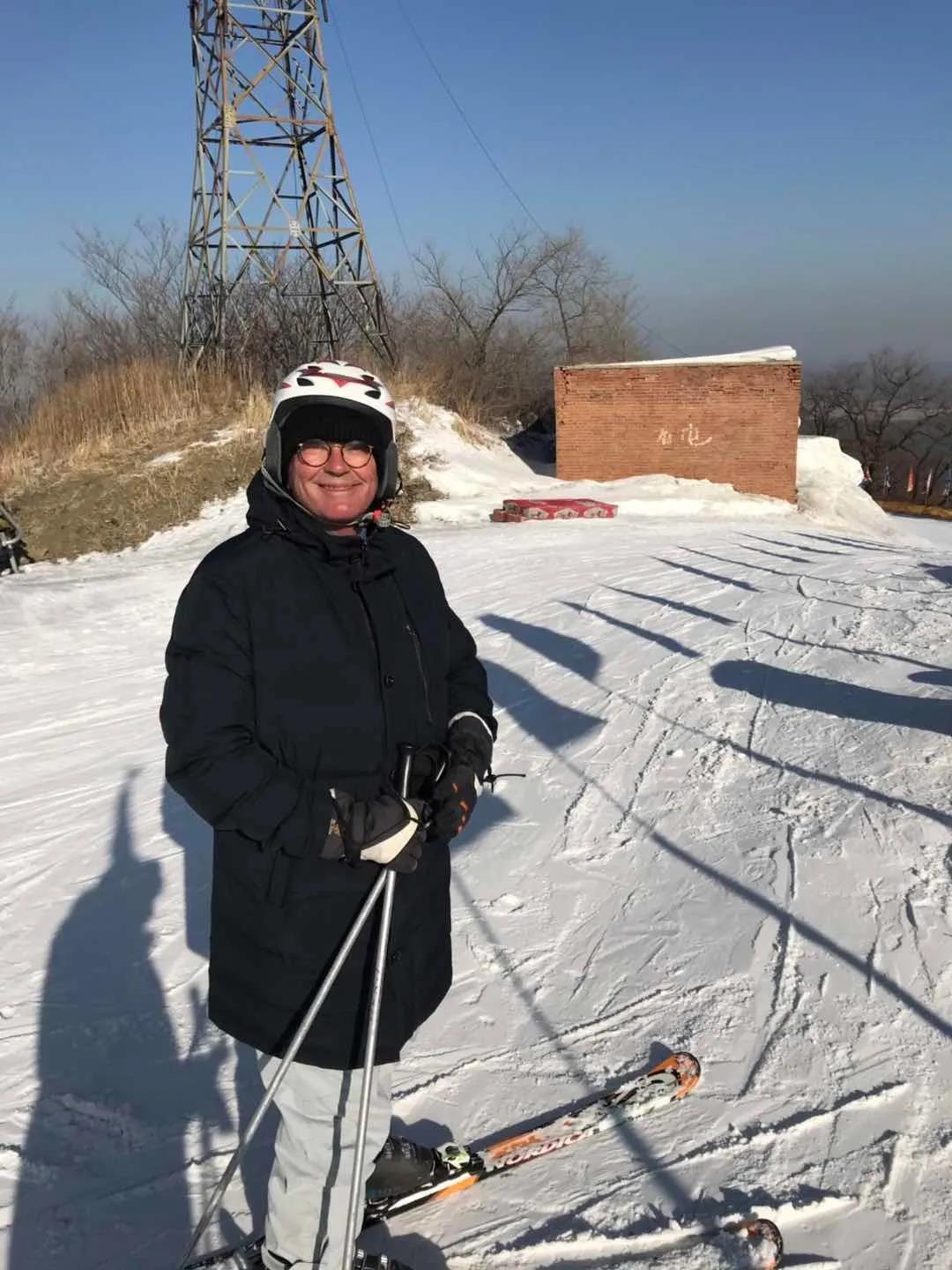Author: GUO Chenzi |

Prof. Dieter Bimberg
An academician of the German Academy of Sciences, the US National Academy of Engineering, the Russian and EU Academies of Sciences, the US National Academy of Inventors. Former chairman of the Institute of Solid State Physics and founding director of the Center of NanoPhotonics at Technical University of Berlin. Honorary doctor of St.Petersburg Academic University. The inventor of the Quantum Dot Laser, proposer for the concept of the HIBBEE Laser.1500+ papers, quoted for 62000+ times; H factor 110; highly cited author on ISI Web of Knowledge.
Chenzi Guo: With Quantum dots (QDs) being discovered with high gain in 1990s, you were among the first to lead the research of QDs and invented QD lasers in the early 1990s. In the past decades, QD lasers have attracted enormous attention, what were the major difficulties when you worked on QD lasers. Do you have any intended ideas for QD lasers which have not been explored or realized yet?
Dieter Bimberg: The material gain of QDs is sensationally large, as discovered by us in 1993 and much larger than theoretically predicted by a team from Tokyo Institute of Technology in the 80s. The waveguide of a laser, where the light travels, shows absorption and scattering losses, which partly counterbalance the gain. The difficulty was to achieve a positive balance. We managed by stacking QD layers on top of each other without introducing crystal defects, up to ten for practical lasers. Secondly, we discovered how to grow low loss waveguides and avoid scattering of light in the waveguide, meaning minimize the losses.We are working at CIOMP on QD lasers for automotive applications like LIDAR or sensing in a wavelength window predicted to show largest eye safety and largest range in foggy air. This window is not accessible to classical double heterostructure lasers based on GaAs or InP.

CIOMP President Jia Ping and Professor Bimberg sign the research cooperation agreement
Chenzi Guo: QD lasers have shown great promise in silicon photonics and are among the game changers in integrated optics. In the communication bands, QD lasers have stood out in practical use. Could you share some opinions about the trend of QD lasers and semiconductor lasers, in both researches and industries? What are the major obstacles in QD lasers applied in silicon photonics, and what cross-disciplines should be involved but were not paid enough attention?
Dieter Bimberg: The term ‘silicon photonics’ refers to integrating passive optical or still active devices like lasers based on III-V-compounds monolithically on Si and thus enabling an integrated technology, which would be advantageous from many different points of view. A lot of research in the last 10 years focused on growing QD layers on large Si substrates, thus enabling to fabricate lasers on Si substrates. After surmounting many difficulties presently, a number of groups all over the world have achieved good performance data for edge emitting lasers. Extended lifetime tests, which are finally decisive, are still missing.
Green photonics is presently thought to be a major sunrise direction of R+D with huge impact in particular on communication systems, like workstation clusters or supercomputers. Their energy consumption is now approaching or already surmounting 500 MW for new installations. Most of their energy is spent for interconnects in different distance ranges from module to module to workstation to workstation. Integration of surface emitting lasers on low energy but high-speed drivers based on CMOS technologies would bring at the same time cost and power consumption down. The VCSELs could be either based on QWs or QDs, depending on the expected emission wavelength. We are working on this integration in national and international teams.

Chenzi Guo: As I know you are a member of US National Academy of Engineering (NAE) board for appointing foreign fellows from underrepresented countries like China, chair of the IEEE Photonics Society fellow appointment board and many other important institutions; I think our audience would love to know how they can get involved, could you please share some insight into what board members value most.
Dieter Bimberg: We stimulate nominations by identifying outstanding researchers and their potential nominators and supporters. In each case it is helpful for a successful nomination to demonstrate a large international impact of the work given e.g. by large citation rates and the Hirsch factor. Previous national recognition of the work is also contributing to the success of a proposal. Writing a nomination is very time consuming and those who believe, they can do it in an afternoon typically fail, but not because of the low quality of the researcher. The success rate is only in the few 10% level, but a submission is valid for several years. At the end a carefully written nomination of an outstanding researcher will pass through. Presently nominations of females are additionally supported by additional slots.

Chenzi Guo: I’ve seen it by myself, you are a very skilled skier, and rumor says you are very proficient at diving, climbing, and some other extreme sports. I think everyone who knows you would feel the youth and strength from the bottom of your heart. How do you balance your life and entertainments? Do you keep adventurous spirits in both life and work?
Dieter Bimberg: You are right, but yourself have also a lot of courage racing down the snowy hills in the vicinity. An old proverb from the Latin period of time says “mens sana in corpore sano”in rough translation “a healthy mind resides in a healthy body”and I follow this proverb. Doing sports makes fun and helps a lot to resist the stress from my daily work. At CIOMP I am playing badminton and here in Europe at the end of summer, when you have middle autumn days, I am sailing a catamaran for a few days in the Mediterranean.

Chenzi Guo: You have been deeply involved in Light Conferences, bearing many responsibilities such as Chair and plenary speaker. In this challenging time of COVID-19 pandemic, scientists from all around the world are trying to move things online to keep the business around. Do you appreciate this less face-to-face way? How long do you think this online conference trend will last? Also due to the COVID-19, many universities worldwide are facing a cut down in research funding, and millions of researchers, especially junior researchers would be affected, do you have any advice in helping young researchers get by this challenging time?
Dieter Bimberg: Specialized conferences, where you meet your colleagues and peers of the field deliver much more than just listening to a presentation: You meet people, who have a social relevance, and can spontaneously interact and further develop your thoughts during intense discussions. I benefitted a lot from face to face meetings and discussions in the past by jointly developing and testing new ideas. Remote conferences are also important: One avoids costly and time-consuming travelling and listens only to those talks, which are interesting for you. In the future we will have both. Right now, I see however an inflation of dubious on-line events, which are not primarily organized by experts of a given field, but by money making groups having just a computer and which are easy to organize.
Cut downs of research funding and phasing out young researchers is no good idea. In research one needs continuity in transferring ideas and technical skills. Having e.g. in my field a high end test lab for photonic devices it will take you several years to catch up again, if you cut the education of young people, where one layer of experience builds up on the previous one. Also, industry needs a continuous supply of freshly educated scientists.
Chenzi Guo: Your authored book, Quantum dot heterostructures, is called the bible in quantum dots, as I quoted from a peer. I personally enjoyed reading this book a lot. It was very careful, enlightening, informative and practical. Could you share some ideas what elements a good book should include and recommend some books for students who major in semiconductor lasing, nanophotonic devices, nanomaterials and nanostructures?
Dieter Bimberg: A good book should put its subject in a frame of what has been done by others before – we are always standing on the shoulders of titans and we are never walking alone – and should show where we might go, a little speculation is always good for the phantasy of the reader.
Good books on lasing and devices exist a lot, so the authors of books seeing what I recommend shall forgive me, not mentioning their work:
1. my students like to read as an introduction the book by S.-L. Chuang 《Physics Of Optoelectronic Devices》, New York: Wiley, 1995
2. Recent work on semiconductor lasing, nanophotonic devices, nanomaterials and nanostructures was edited or authored by me and my students:
a) nanomaterials: V. A. Shchukin, N. N. Ledentsov and D. Bimberg, “Epitaxy of Nanostructures”, Springer 2004; D. Bimberg ed. , “Semiconductor Nanostructures”, Springer 2008; b) Devices: G. Eisenstein and D. Bimberg eds., “Green Photonics and Electronics”, Springer 2017
